After we make the desi cow ghee and allow it to settle and cool down naturally at room temperature, ghee acquires a grainy texture. This lovely texture is deliberate and it is not in any way a defect in the product. When you cook with desi ghee, or use it as a spread on a warm food (like a toast), the grainy texture disappears very quickly. If you like your desi ghee to be soft and want to use it as a spread on a cold food then simply warm up the ghee for a few seconds on low heat. Ghee was traditionally used as a spread with warm foods (like Indian breads Roti, Naan or Chapati) rather than on cold foods.
Ghee has been used in traditional cooking in India, Nepal, Pakistan and Southeast Asia for eons, as an oil and as an ingredient, but it is also an Ayurvedic go-to for herbal ointments, massage and as a medicinal to remedy rashes & burns. While butter is not bad for you (especially in comparison with vegetable oil, margarine and the multitude of erroneous, mass-marketed options introduced in the 1960s), ghee, which started as butter, may be the better choice.
For one thing, ghee, heated longer than most clarified butter, is darker and has a nuttier taste, as well as a higher smoke point, making it easier and healthier for sautéing. In fact, including desi ghee in your diet may bring benefits for several areas, including your heart. Ghee is made up of about 50% saturated fat, which was considered a bad thing until the medical community and nutritionists began realizing that fat — including saturated fat — is good for you.

Why ghee is healthy for you
First of all, let us take a look at the nutrient structure of ghee. It is loaded with A, D, E and K Vitamins. Ghee is also very rich in dietary fats. In order for these vitamins to be digested, they need to combine with fat molecules because they are fat soluble. Ghee also provides these fat molecules in the form of dietary fiber. Together, they get absorbed easily by our bodies and hence, these nutrients can be used by our bodies.
There are many, many benefits of consuming pure desi cow ghee. If you consume desi ghee on a regular basis, it will boost your mental as well as physical strength. This will help in keeping your body fit and fighting against disease.
Besides this, ghee is also known as a body cleanser because it removes impurities from your body. It strengthens your eyesight, your muscles and tendons.
As far as people with cholesterol problems are concerned, shelves in the grocery markets are full of cholesterol free oils. However, desi ghee is also a good option when you compare it with butter because it is lower in fats than butter.
Read our blog – Why The Pure Desi Cow Milk Ghee Is Costlier Than Normal Ghee?
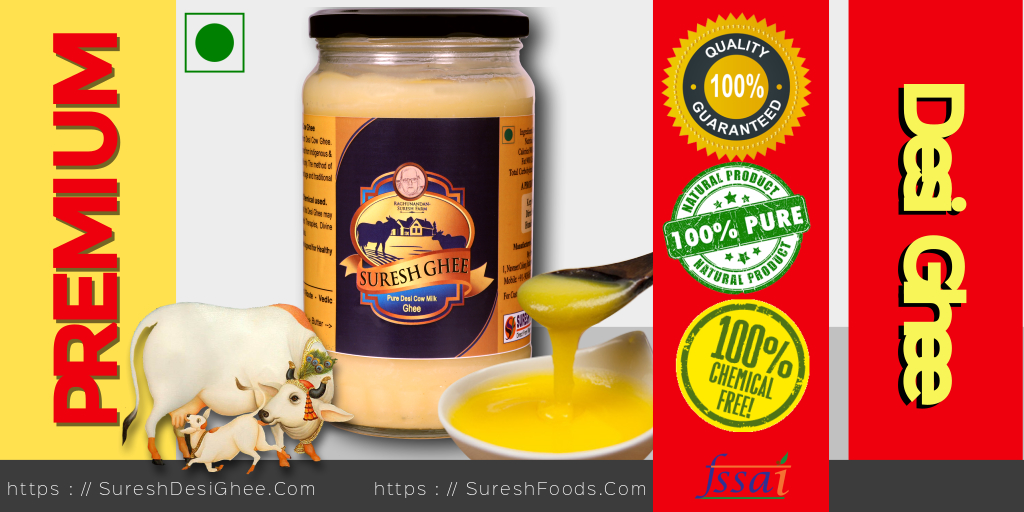
Why use
There are many benefits that are associated with using desi ghee and here are some reasons why you should incorporate it into your backpacking menu:
- Ghee Does Not Spoil Easily: As the milk solids have been removed during the production process, ghee doesn’t spoil easily. So it does not need refrigeration and can be stored at room temperature for several months or even years.
- Ghee Has Higher Smoking Point: Unlike other vegetable oils, ghee has a high smoke point (it doesn’t burn as easily), making it ideal for cooking. This is due to Ghee’s stable saturated bonds, which enable it to hold its natural form during cooking. This makes Ghee excelling for sautéing, stir-frying and baking – it’s generally the best oil to cook with. It also lends a very rich and soothing flavour to dishes, which works well with both sweet and savory foods.
- Blood Glucose Control : Properties of ghee include a source of fats which leads to a rich source of healthy vitamins. Consuming a correct quantity supports soaking up the nutrients from the foods and vegetables a person consumes. Such a process supports proper blood glucose control, additionally making sure good diabetes care. Furthermore it possesses a very low carb consistency. Consuming carbs which does not go with a diabetic-friendly food. Systematically, ghee acts as a substantial option that provides enough other healthy nutritional benefits.
- Presence of linoleic acid : Regular intake with moderate amounts simply because of the presence of linoleic acid in ghee sports to decrease the potential for heart problems. Cardiovascular problems are considered to be one of the most common complicated cases of diabetes. Regular consumption in moderate quantities of ghee supports the working of gut hormones. Furthermore, the benefit of an improved working of gut hormone is that it supports in delaying carb absorption.
- Insulin Level Improved : Ghee can be healthy for a person’s body in multiple ways as fatty deposits build up in the body, meltdown when the optimum amount of ghee is consumed which supports in an effective diabetes management. Such function enables a better secretion of insulin, and this definitely aids in controlling diabetes.
- Rich in Vitamin K : Proven to be safe for regular consumption, ghee is also rich in vitamin K and other sources of vitamins and antioxidants that acts as an immunity booster. A person having diabetes usually has a weaker immune system. Consumption of ghee which has Vitamin K together with fatty acids is found to be useful in supporting complete food absorption. Therefore, ghee promotes an improved metabolism and helps in controlling blood sugars.
- Decrease Bad Cholesterol : Organic ghee is useful in lowering the levels of bad cholesterol. Including ghee in high-carb foods such as white bread, rice, and parathas might aid in reducing their GI and benefit diabetics.
- Ghee is Rich In Vitamins: Fat-soluble vitamins A, D, E and K which are vital for bone formation, the health of the brain and for enhancing the immunity are abundantly contained in ghee.
- Ghee Promotes Flexibility: Desi ghee is a good lubricator of the joints and connective tissues; it enhances muscles flexibility. No wonder it is the main butter of many yoga practitioners.
- Ghee is a good source of energy: Desi ghee is a good source of energy. It contains medium & short-chain fatty acids, “of which, lauric acid is a potent antimicrobial and antifungal substance.” Nursing mothers are often given ladoos loaded with ghee, since they are loaded with energy.
How to Cook With Ghee
Ghee is better for high-heat cooking than butter since it has a smoke point of between 200 °C (392 °F) and 250 °C (482 °F), as compared with about 302 °F for ordinary butter. Desi ghee is commonly used in cooking Indian food and can be used whenever butter or oil is used in most recipes. Simply melt desi ghee and then spread it on bread for a tasty snack or drizzle it over vegetables prior to roasting. Desi ghee can also be swapped for vegetable oil or coconut oil when making baked goods.
Although ghee does not taste exactly like store-bought butter, it still has a delicious taste and a smooth quality. Some even consider it to be superior and don’t want to return to regular butter after experiencing the taste—and benefits—of ghee!
“Ghee is sweet in taste and cooling in energy, rejuvenating, good for the eyes and vision, kindles digestion, bestows lustre and beauty, enhances memory and stamina, increases intellect, promotes longevity, is an aphrodisiac and protects the body from various diseases.” (Bhavaprakasha 6.18.1)
Medicated Qualities of Ghee
Thanks to its penetrating qualities, ghee butter can act as
a vehicle to carry substances deep into all seven tissue layers. It is a
wonderful anupan (vehicle) for herbs and other medicinal substances, and
Ayurvedic practitioners often combine herbs to a base of butter to create a
“medicated ghee” with the intention of utilizing ghee’s qualities to bring the
herbs deeper into the tissues. Some popular examples of medicated ghee include
brahmi ghee and shatavari ghee.
No other substance is as widely used to prepare Ayurvedic medicines as
ghee. Ghee is also cited as the best
substance for preparing the body for Ayurveda’s internal detoxification
(Panchakarma). One reason for this is
that ghee is given as the best remedy for diseases due to aggravated Pitta and
Vata doshas. Ghee alleviates Pitta dosha
by its cold, sweet properties and Vata by its oiliness. Ghee is hence recommended in autumn when
Pitta’s hot nature can get aggravated after summer. But there is more to ghee than its dosha balancing
properties. This article explores ghee’s role in working alongside Ayurvedic
herbs, as well as its own inherent healing abilities not found in other fats. Ghee
is ideal for massage and detoxification

How to Store Ghee
Another advantage of desi ghee is that it has a longer shelf life than ordinary butter and, when stored in an airtight container, can be kept at room temperature. Ghee can also be kept in the freezer or refrigerator. If storing it this way, desi ghee will keep for a long time, however, you will need to soften it to use it. Ghee should be kept in a cool, dark and dry place.


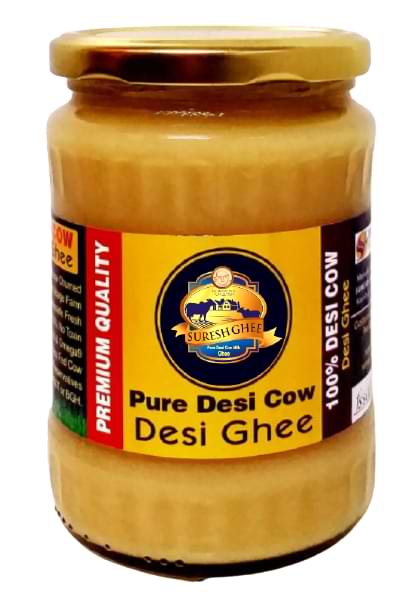

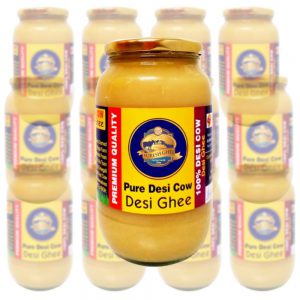
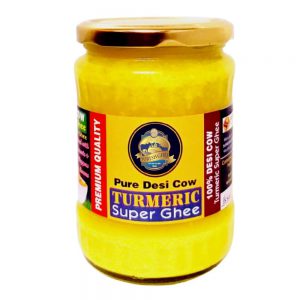
 WhatsApp us
WhatsApp us 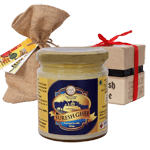
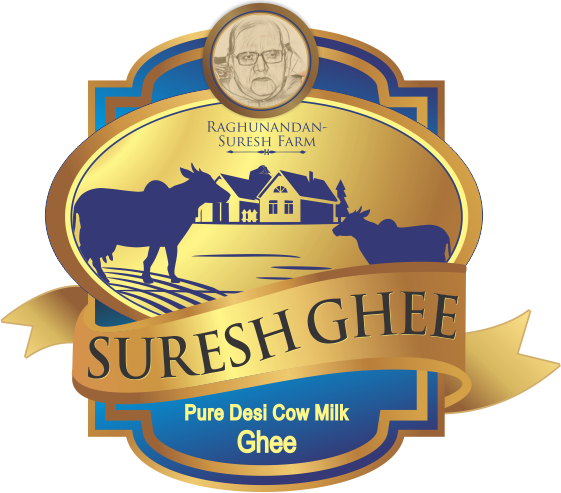
Naveen m...